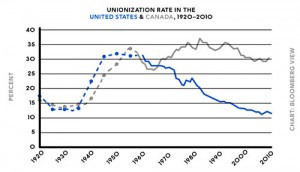
This commentary on the need for paid sick leave originally appeared in the Ohio Capital Journal on March 18, 2020
Every day, working Ohioans need access to paid sick days to address short-term health conditions for both themselves and their families, and these needs are amplified during a public health crisis like the current COVID-19 outbreak.
The coronavirus has exposed vast shortfalls in our state’s social safety net programs, demonstrating the reality that many working people face on a regular basis: an impossible choice between their health and their paycheck.
As the spread of the virus continues, it reinforces the need for paid sick days to help the working people and families impacted during the outbreak — and for those needing to address short-term health conditions in the future.
Nationally, 7 in 10 low-wage working people do not receive any paid sick days from their employer.
Unfortunately, even without the strain of a pandemic, our broken caregiving systems fall short of providing families with the support they need to address their own health, or the health of a loved one, without risking their job or their paycheck.
The United States is one of few developed nations in the world without a guaranteed paid sick leave law, which leaves behind 1 in 4 U.S. workers, or more than 32 million people, without access to any paid sick days.
Low-wage and hourly workers, the majority of whom are women and people of color, are less likely to have access to paid sick days. In fact, nationally, 7 in 10 low-wage working people do not receive any paid sick days from their employer, exacerbating health and economic disparities facing lower-wage working people and their families.
Disparities can cause working people without paid sick leave to feel compelled to show up for work even when they are showing symptoms.
Paid sick days have been shown to reduce the spread of illness, and the policy would help contain the spread of coronavirus by allowing working people to stay home — without risking their jobs or their paycheck — if they are infected with the virus, need to care for a loved one with the virus, or need to stay home from work with children following school or childcare closures.
However, disparities in access can cause working people without paid sick leave to feel compelled to show up for work even when they are showing symptoms. This is particularly true for low-wage working people in the service industry (like those in restaurants, retail, childcare, and home healthcare); domestic workers (such as nannies, house cleaners, and caregivers); contract workers (also known as the gig economy); and part-time workers, who are less likely to have access to the policy.
Many of these workers are in high-contact positions, which can’t be done remotely, making it more difficult to contain the outbreak, and hitting low-wage workers harder.
In Congress, the U.S. House recently passed, with bipartisan support, a coronavirus economic relief package, which includes access to 14 days of paid sick leave for many working people. The bill also expands access to paid family and medical leave, a policy designed to help working people address the longer-term medical conditions for themselves or their family, something that will inevitably be brought on by the coronavirus.
Despite limitations in who is covered by the legislation, it would take important steps in extending crucial economic support to working people impacted by coronavirus.
The bill is currently sitting in the U.S. Senate awaiting action, delaying crucial support for impacted workers. Every day that this bill passage is held up, tens of millions working people in Ohio and across the country are left without any access to paid sick days or paid family leave, causing potentially devastating damage to their ability to support themselves and their families.
Ohio has an opportunity to continue to lead on our response to this crisis
Here in Ohio, Gov. Mike DeWine has demonstrated leadership on the national level with his swift action to enact sweeping health precautions and economic relief support for Ohioans affected by the virus, including changes to the state unemployment compensation system.
These changes will help support working people who are laid off, facing closures of their employers as a result of the coronavirus, or in mandatory quarantine.
However, the gaps in the state unemployment compensation policy leave, as well as the federal economic relief package still held up in Congress, leave behind many working Ohioans who will be impacted by this public health emergency.
Ohio has an opportunity to continue to lead on our response to this crisis. In order to fully address the far-reaching health and economic consequences of the coronavirus outbreak in Ohio, our state leaders must enact emergency paid sick days to ensure that working people are not forced to choose between their health and their economic security.
